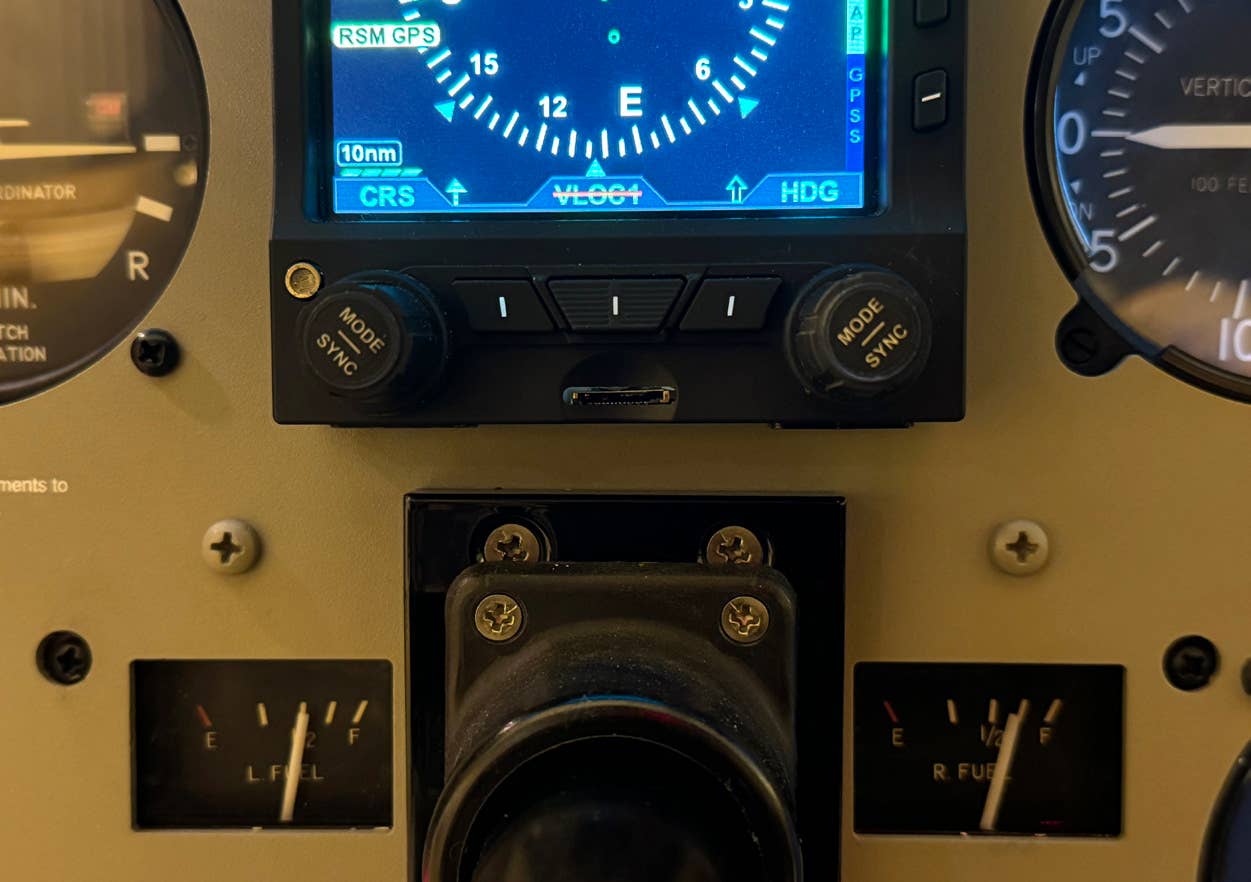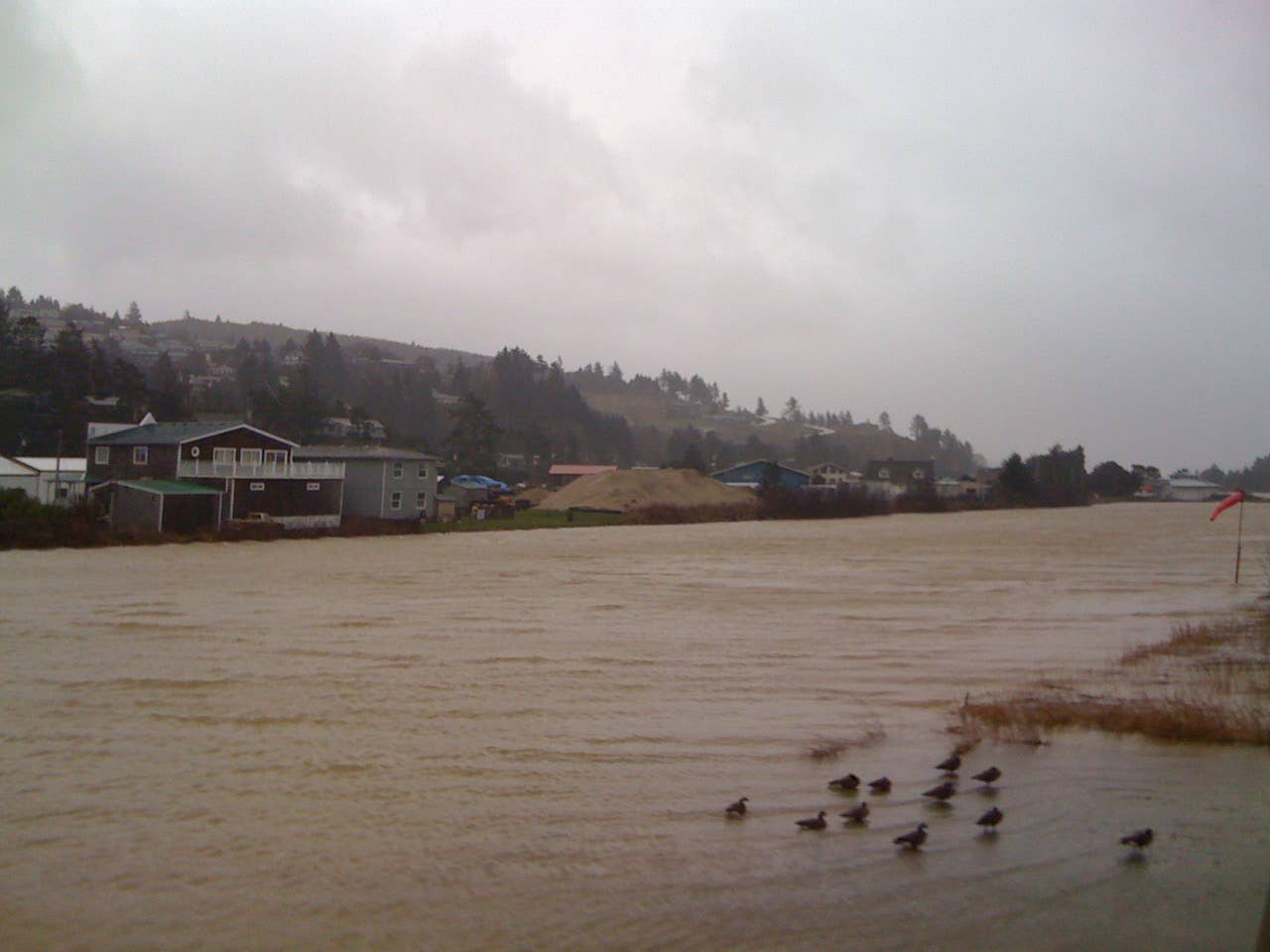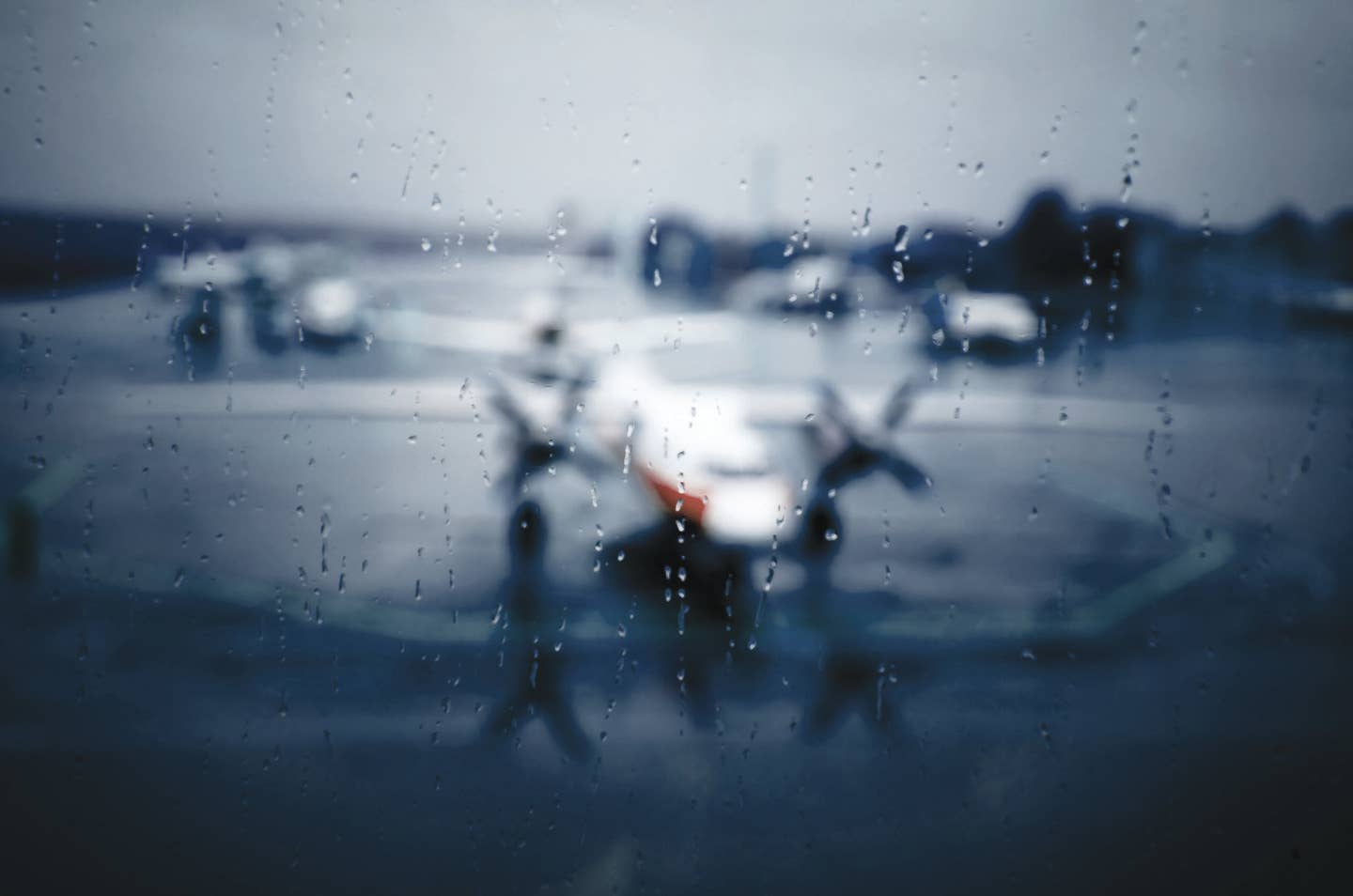
Chris Gall
If it were true that "Flying is inherently safe; it's just very unforgiving of mistakes," it would follow that the best way to improve our flying is to eliminate mistakes. To do that I'd like to suggest that pilots adopt the phrase "Every day, in every way, I'm getting better and better" as their mantra, with a slight modification: "Every flight, in every way, I'm getting better and better."
It's in our own self-interest to strive to improve our flying technique. These are some of the ways I've found you can improve your aeronautical skills and knowledge. Do what you will with them, but remember, improving your flying is in your own best — and long-term — interest.
1. Fly With Someone Who's a Better Pilot Than You Are (or Not)
In college I roomed with a student from France, and we occasionally played tennis together. But one day, he refused to hit with me. "I've been told the only way you get to be a better player," he said, "is to only play with people better than you." His opinion of his ability was mistaken, but he had a point.
Over the years I've been lucky, having shared the cockpit with some really good pilots. Some were great "sticks"; others knew how to play the Air Traffic Control system with finesse, making their flights more efficient and the job of the controllers easier. I'm not suggesting you only fly with pilots who are better than you are, but when you do fly with other pilots, pay attention to how they handle themselves and their airplane. Then, considering what they do, decide what makes sense for you to adopt for your own flying and what doesn't.
2. Practice Patterns
I had the advantage of sitting at the feet of a master every two years when Richard Collins and I would trade seats for our biennial flight reviews. Once, I presented Richard with the Air Force's Pattern A and asked him to fly it under the hood. The pattern calls for a series of timed turns and legs and changes to cruise speed. Col. Joseph B. Duckworth, considered the father of the Air Force's modern-instrument flying, is credited with introducing the patterns (A, B and C) into the attitude-instrument training curriculum.
When Pattern A is performed precisely, the airplane will end on the same heading it was on at the beginning, some 12 minutes after the maneuver began. Richard's performance was impressive; he nailed it!
Pattern B adds 500 fpm descents and an emergency pull-up at the conclusion of the pattern. Pattern C describes a square with four descending and climbing timed turns of 270 degrees and 450 degrees separated by straight two-minute legs.
Practicing the patterns can be a humbling experience but a great way to tune up your scan and sharpen your instruments skills.
3. Be Precise
Whenever Pete O'Brien, my safety pilot of choice, landed my Cardinal, he always seemed to make smoother landings than I did. I finally realized the major difference was that he was paying attention. Familiarity doesn't only breed contempt; it also fosters a languorous attitude. When you taxi, are you on the centerline? How good are you at precisely holding your assigned altitude and heading? It can be trying and exhausting, but if you demand precision of yourself, you'll be a better pilot.
4. Back to Basics
Remember those exercises you had to fly for your private or commercial certificate? The maneuvers (turns around a point, S-turns, Dutch rolls, eights around pylons, eights on pylons, steep spirals, lazy eights, chandelles, power-off landings, slips and slow flight) were designed to teach us precise aircraft control while compensating for wind drift. How long has it been since you tested yourself with any of those maneuvers? Be honest now — when was the last time you attempted a power-off emergency landing from a position downwind or from altitude, performed a stall recovery or did a short, soft-field takeoff or landing?
Give yourself a refresher course on the basics. It'll pay off with more precision and a better appreciation of your and your airplane's capabilities and limitations.
5. Continued Ed
When I was presented with my private certificate, the examiner said, "This is a license to learn." Part of that learning can be done without going near an airplane. A wide selection of training courses and refresher programs are available online and on DVD.
The AOPA Air Safety Institute posts a number of free interactive video programs that are designed to improve our flying. The courses are available at airsafetyinstitute.org and you don't have to be a member of AOPA to access them.
Computer programs and DVDs are also available from Sporty's Pilot Shop (including the Air Facts series with Richard Collins) and King Schools, as well as other providers.
Pilot Workshops (pilotworkshops.com) offers free weekly pilot tips from a cadre of respected flight instructors and examiners that are taken from the full-length programs the company offers to subscribers.
If you're not a participant in the FAA WINGS program (FAAsafety.gov), you should be. The program is designed to encourage pilots to continue their aviation education and requires attendance at seminars or training programs and some training flights.
To become aware of when and where WINGS' approved seminars are being held, you can subscribe to Newsbug (newsbug.afasf.org), which provides notices of FAA Safety Team safety seminars and events within 100 miles of your ZIP code.
Finally, as part of your continuing education, dig out the pilot's operating handbook (POH) for your airplane and read it again. You'll be surprised at what you either never knew or have forgotten.
6. Schedule a Flight With an Instructor
Don't be shy. If it's been awhile since you've heard from your flight instructor, give him or her a call and schedule a flight. The biennial flight reviews that were mandated back in 1974 might be too far between to wipe off the rust that has accumulated over the previous two years or, to stifle any germinating bad habits. Consider at least an annual refresher or better yet, one every six months. Include instrument approaches, and it's a great way to stay current — and proficient. If you're qualified to fly different classes of airplanes, you might want to alternate and complete the reviews in different aircraft.
7. Give Your Autopilot a Rest
Technological paradigm shifts have been impressive, but in some ways they've done a disservice. Pilots have become dependent on the use of autopilots and GPS navigators and the old adage "If you don't use it, you'll lose it" comes to mind.
Periodically, give your autopilot a rest. During a longer flight, plan to hand-fly a leg or, better yet, make a flight from beginning to end without the help of the autopilot. If nothing else, it'll give you new respect for how well the autopilot flies your airplane.
8. Pretend to Be a Weather Man
It was Mark Twain who said, "Everybody complains about the weather but nobody does anything about it." As pilots, we tend to be much more conscious of what's happening in the firmament but although we can't do anything about it, we should understand what's in store for us on any flight. I'd guess you probably haven't studied weather-depiction charts or prog charts since you had to prepare for a knowledge test.
As an exercise, call up a series of surface weather analysis charts over time and then forecast the weather conditions you would expect to encounter during a future flight between two points on the chart. Having done that, get a weather briefing for the same flight and see how close your forecast came to the briefer's forecast.
9. Ratings Count
One of the best ways to improve your flying is by adding certificates or ratings. Moving up from a private to a commercial certificate will add precision to your skill set. Advancing in class, you could add an instrument rating, which would help your precision even more and enhance the utility of your airplane. A glider rating will teach you a great deal about the effects of ridge waves and thermals, but most importantly, it will give you a new understanding of energy management. A helicopter rating will add an appreciation for the importance of staying ahead of the airplane and anticipating responses to your control inputs. Other ratings that will improve your competence and add utility — and adventure — include multiengine, seaplane, gyroplane and balloon, among others.
Other options for "graduate" study include courses in mountain flying, aerobatics and endorsements to operate tailwheel, complex- and high-performance airplanes.
10. Role Play
Scenario-based training has become a catchphrase for instructors presenting real-life situations to students during a training flight. Take a trip with your favorite safety pilot and play a bit of "what if." You can take turns coming up with situations that require a response. Questions to pose could include: What would you do now if the engine started running rough? Where would you make an emergency landing? Where would you divert to if for some reason we can't land at our destination? Digging deeper with a "why?" will increase the value of the exercise. Different questions may apply to an instrument flight.
11. Stay Ahead of the Game
Anticipate, anticipate and anticipate! If you get behind the airplane to the point where chores that should have already been accomplished are delaying responses that need to be made right now, you're in for a bumpy ride. A flight will go a lot smoother if you anticipate what's coming and what you'll have to do next. If you listen on the frequency to airplanes ahead of you on the airway, you can get a pretty good idea of what frequency you'll be given next. Tune your standby radio and if you're correct, you'll be that much further ahead. Listen to the ATIS far enough out so you know the airport conditions, whether you're likely to have to make a missed approach, and what approach you can expect so you can get the chart out and begin to review it. You can calculate (or use your GPS) to determine when you want to begin your descent. Although the controller won't always be able to approve a descent when you want, you'll know when to ask.
12. Good Housekeeping/Using Checklists
If you've gotten sloppy about using checklists, you need to get back in the habit. There's a reason for using them, and as we age, we're more likely to miss something if we're trying to rely on memory and familiarity.
Although my home office is a mess, I've always been obsessive about keeping a neat and well-organized cockpit. If you need something in flight, particularly if you need it in a hurry, you'd better have it handy; otherwise, you're going to be scrambling and that's not good. Have those things in reach that you're likely to need — things like charts (sectionals, approach or en route), the POH, a flashlight, a pen, pencil or marker and extra batteries for all those electronic devices.
13. Fly VFR Without Using a GPS
GPS navigators, as long as they work, have made navigating almost too easy, to the point that many of us have lost the ability to find our way without them. How 'bout making a flight without using your GPS? Pilotage (comparing landmarks with the sectional chart) and dead reckoning (holding a heading over time) worked for the early piloting pioneers. Get out a sectional, draw a course line, compute the course and magnetic heading and go fly it. But before you do, check the airspace along the route and check if there are any active TFRs in the way. Try flying at least one long leg by dead reckoning instead of pilotage and see how well you do.
14. Debrief
Your instructor probably told you that you're not done flying until the airplane's engine is shut down. I'd suggest you're not done flying until after you've shut off the engine and spent some time reviewing the flight and exploring what you could have done better, safer or more efficiently. As students, our instructors always (or should have) conducted a debriefing with us after each flight. If you want to become a better pilot, then you need to evaluate each flight for what you did wrong, what you could have done better and what you did right.
15. Be Risk Averse
Finally, the best way to improve your flying — and your safety — is to be serious about assessing the risk involved with every flight. Be realistic about your own ability and that of your airplane, in order to complete every planned flight with prudent safety margins.

Sign-up for newsletters & special offers!
Get the latest FLYING stories & special offers delivered directly to your inbox






